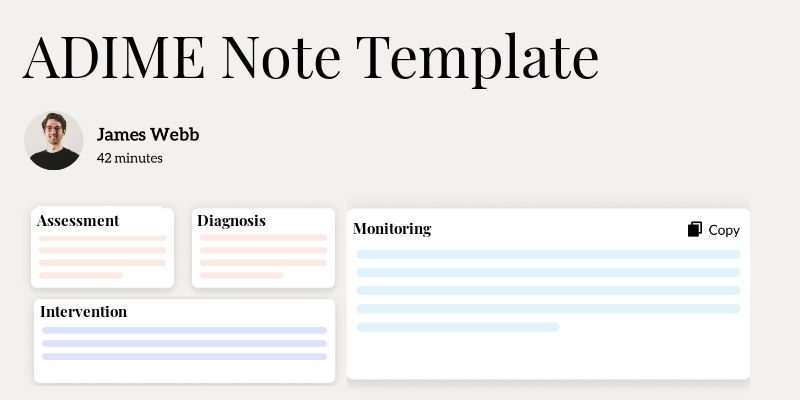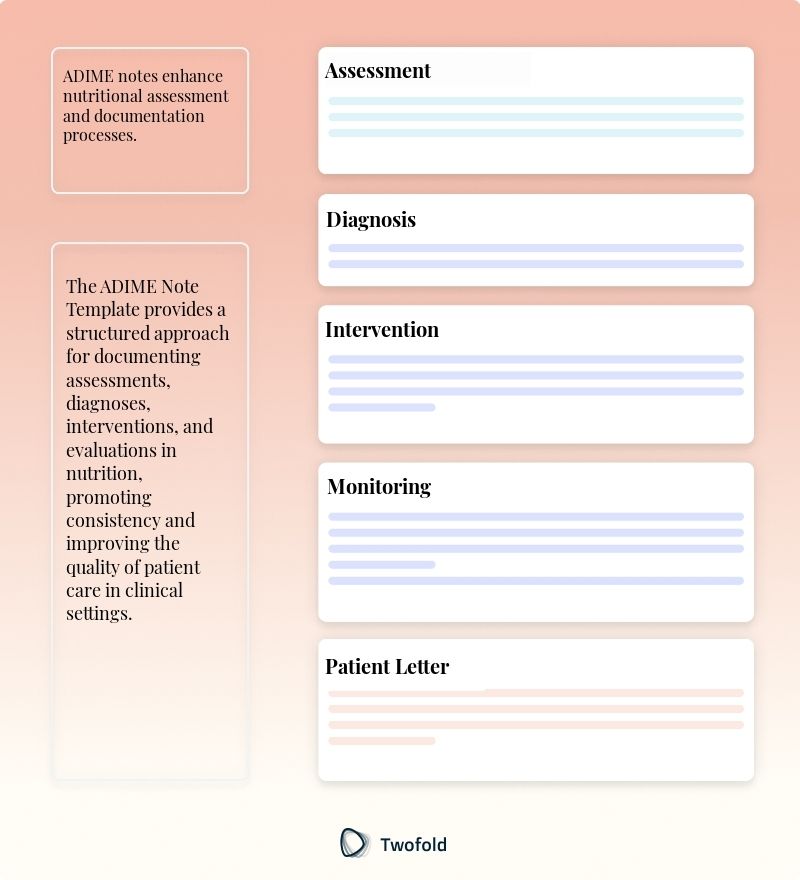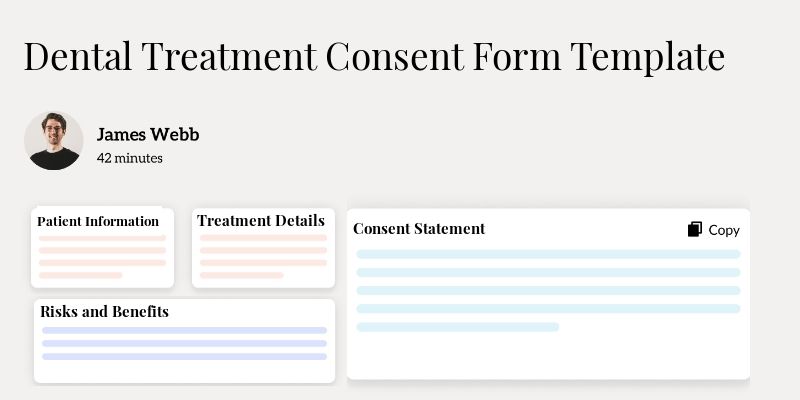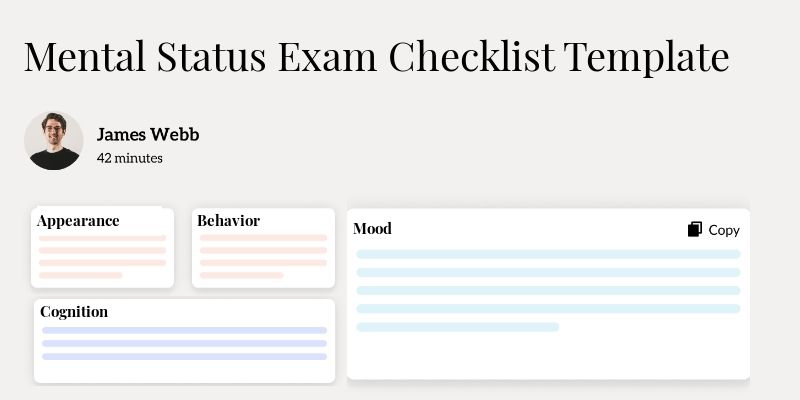
ADIME Note Template
Struggling to make sense of your nutrition assessments? You're not alone. The ADIME note template is a vital tool that brings structure and clarity to the documentation of nutrition care. Let's explore how this template can simplify the process, enhance accuracy, and improve patient outcomes.
What Is an ADIME Note Template?
The ADIME note template is a structured form used by dietitians and nutritionists to assess, diagnose, intervene, and monitor patients' nutritional needs. It lays out the nutrition care process comprehensively, simplifying communication in clinical settings.
By using this format, professionals can systematically document dietary evaluations and modifications, ensuring that all aspects of a patient's nutritional care are considered and recorded.
Key Components of an ADIME Note
An ADIME note template consists of clear sections designed for organized patient documentation:
- Assessment: Collect and evaluate patient data, including dietary intake, lab results, and anthropometric measurements.
- Diagnosis: Identify nutrition-related problems using standard diagnostic terms.
- Intervention: Plan actions to address the diagnosed problem, such as modifying energy or nutrient intake.
- Monitoring and Evaluation: Track progress and manage outcomes to assess the success of the intervention.

How to Use an ADIME Note Template: Step-by-Step Process
Step 1: Assessment
Gather comprehensive patient data to understand the current nutritional status, focusing on dietary history, biochemistry, and physical activity.
Step 2: Diagnosis
Use collected data to define nutrition problems, employing evidence‑based criteria and standardized language.
Step 3: Intervention
Develop a tailored intervention strategy aimed at resolving the identified nutrition diagnosis, incorporating specific goals and expected outcomes.
Step 4: Monitoring and Evaluation
Regularly review patient progress by determining which outcome measures will be used to evaluate intervention effectiveness.
Benefits of an ADIME Note
Benefit | Details |
|---|---|
Consistency | Ensures uniform documentation practices across the clinical team. |
Structured Approach | Facilitates a comprehensive evaluation by following a logical sequence. |
Improved Communication | Streamlines information sharing among healthcare providers, enhancing patient care continuity. |
Enhanced Patient Care | Enables targeted nutrition interventions based on accurate data analysis. |
Stakeholders in ADIME
The ADIME note template impacts a variety of stakeholders involved in patient care:
- Dietitians: Sally, a clinical dietitian, uses the template to manage her caseload efficiently, ensuring no detail is overlooked.
- Physicians: Dr. Jones refers to these notes to adjust medication plans based on nutritional status.
- Nurses: Martha, an RN, uses the information to assist with patient education and follow-ups.
- Patients: Joe, a diabetic patient, gains insight into his dietary needs through regular consultations guided by his dietitian's ADIME notes.
Example of an ADIME Note PDF
Here's a glimpse into a typical ADIME note layout used in real‑world applications.
Real-World Use Cases: Practical Impact of the ADIME Note Template
The ADIME template has reshaped how dietetic practices are executed, making a significant impact in various scenarios:
- In Sarah's outpatient clinic, the consistent use of ADIME simplified her tracking of nutritional interventions, leading to improved patient compliance.
- During John's hospitalization, his multidisciplinary team relied on ADIME notes for seamless transitions between dietary phases, significantly reducing recovery time.
- Emma's private practice saw enhanced client satisfaction, as ADIME facilitated comprehensive, evidence-based nutrition counseling sessions.
Conclusion
The ADIME note template is a cornerstone in clinical nutrition documentation, offering a systematic framework that enhances patient care. By incorporating expert tips and understanding its components and benefits, dietitians can ensure precise and effective treatment, ultimately leading to better health outcomes.
Disclaimer: This article is for informational purposes only and does not constitute legal or medical advice. Always consult professional guidelines and regulatory bodies for specific compliance requirements.

Dr. Danni Steimberg
Dr. Danni Steimberg is a pediatrician at Schneider Children’s Medical Center with extensive experience in patient care, medical education, and healthcare innovation. He earned his MD from Semmelweis University and has worked at Kaplan Medical Center and Sheba Medical Center.
Dietitian notes hit hardest when each section feeds the next. The NCPR-Loop—Nutrition Assessment → Clinical/PES Diagnosis → Plan/Intervention → Response/Monitoring—keeps ADIME entries tight, traceable, and audit‑ready.
- Assessment → Diagnosis Link: For every key assessment datum (e.g., 7% weight loss in 3 months, low intake), map it to the PES statement—Problem, Etiology, Signs/Symptoms—in one line. This makes causality obvious and speeds peer review.
- Intervention → Metric Pairing: Tie each intervention to a quantifiable marker (“Add 1 oral nutrition supplement TID → target intake ≥75% of needs; weekly weight trend”). This creates automatic M&E checkpoints.
- Close the Loop in ‘E’: In Evaluation/Monitoring, explicitly confirm whether each marker moved (“PO intake ↑ from 40% → 70%; still below goal—continue ONS, add mealtime coaching”). This proves effectiveness and guides the next ADIME cycle.
Frequently Asked Questions
Reduce burnout,
improve patient care.
Join thousands of clinicians already using AI to become more efficient.

Dental Treatment Consent Form Template
Discover practical Dental Treatment Consent Form Template templates to enhance your documentation efficiency.

Mental Status Exam Checklist Template
Discover practical Mental Status Exam Checklist Template templates to enhance your documentation efficiency.

Client Feedback Form Template
Discover practical Client Feedback Form templates to enhance your documentation efficiency.

